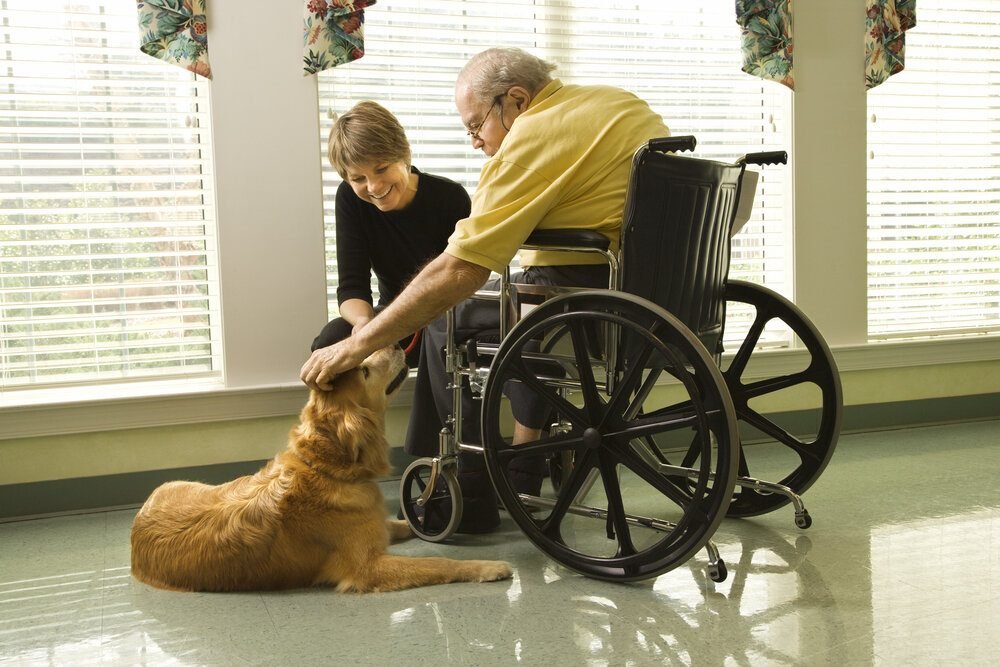
There’s no denying that our pets give us joy. Just the sight of them being content with a treat we specifically picked for them warms our hearts. They’re not hard to please, and they will not think twice about showing how they appreciate us. They’re excited to see us, be with us, and play with us. They show us that they love us without hesitation. These characteristics of pets are what make them good for our souls, and it’s the same reason why pets are now used for therapy.
What Is Pet Therapy?
Pet therapy involves the use of pets to assist patients. It is also called animal-assisted therapy. Dogs are the most common animals used because they’re the most domesticated. However, other animals like cats and horses are also used. Pet therapy aims to help patients recover or cope with their health conditions like mental health disorders, heart problems, and cancer.
Another facet of pet therapy is animal-assisted activities. These activities are focused on giving comfort and joy to patients. For instance, elderly patients in a nursing home can benefit from feeding or petting animals.
Pet Therapy and Patients
The life of a patient with a health condition can become a dull routine. The boredom and monotony may not inspire or motivate patients to put in the effort to become healthier and recover faster, especially those who are advised to stay in the hospital for weeks.
Introducing animals into their treatment plan can do wonders. Not only will this add something new to their daily routines, but they can build a positive relationship with the animal, too.
In hospitals, the animal-assisted therapy program would involve an assistance dog visiting the patient. The patient will be asked whether he is willing to engage with the dog or not. If the patient agrees, he can pet the dog or take part in other activities with the dog as he wishes, as long as the doctors allow it.

Being around animals has a natural effect on patients. It can easily put a smile on their faces and make them feel more optimistic. Most patients will even look forward to the dog’s next visit. The benefits of pet therapy include:(1)
- Helps improve joint movements and motivates patients to participate in exercises
- Helps with independent movements
- Boosts self-esteem
- Reduces fatigue, anxiety, and stress
- Improves the relationship and interactions between patient and healthcare providers
- Encourages verbal communication and socialization (even patient-to-patient)
- Reduces feelings of isolation, loneliness, and boredom
- Provides calming and healing effects
- Teaches patients how to be empathetic and nurturing
Children and adults who are staying in long-term care facilities, have heart diseases, undergo cancer treatments, have anxiety, dementia, or suffer from PTSD will benefit from pet therapy the most.
In non-medical settings, the use of pet therapy is growing, too. Some companies, like Amazon, allow dogs at the workplace as it helps reduce employee stress. Universities turn to pet therapy to help reduce anxiety and stress among students and teachers. Even communities can benefit from pet therapy with neighbors bonding and engaging in conversations because of pets.
Atul Gawande, in his book “Being Mortal”, shared the story of how pets helped patients in a nursing home. Dogs, birds, and cats were introduced to the patients, and there were three incredible results: reduction of prescriptions went down 50%, and because of the reduction of psychotropic drugs, there is a 15% reduction in mortality rate.
A Few Tips to Remember
There are necessary steps to be taken before an animal is assigned to a specific patient. For one, both the handler and the animal must undergo training to provide assistance. This includes the animal being immunized and checked for any diseases. The handler should be trained on animal control, too. Both handler and the animal should receive a certification from the organization that sponsors them.
The other essential factor is that the handler should be made aware of the goals and expectations of pet therapy that are specific to the patient. The therapist and doctor will establish these goals, together with a reasonable timeline. They will also monitor the progress to see if the therapy treatment plan needs to be adjusted.
Pet therapy can be successful in helping patients recover faster. Therapy animals bring optimism, happiness, comfort, and companionship. Their mere presence in a hospital, nursing home, or healthcare facility instantly is a breath of fresh air. Animals give patients newfound hope, one that they can hold on to during tough times.
Sources: